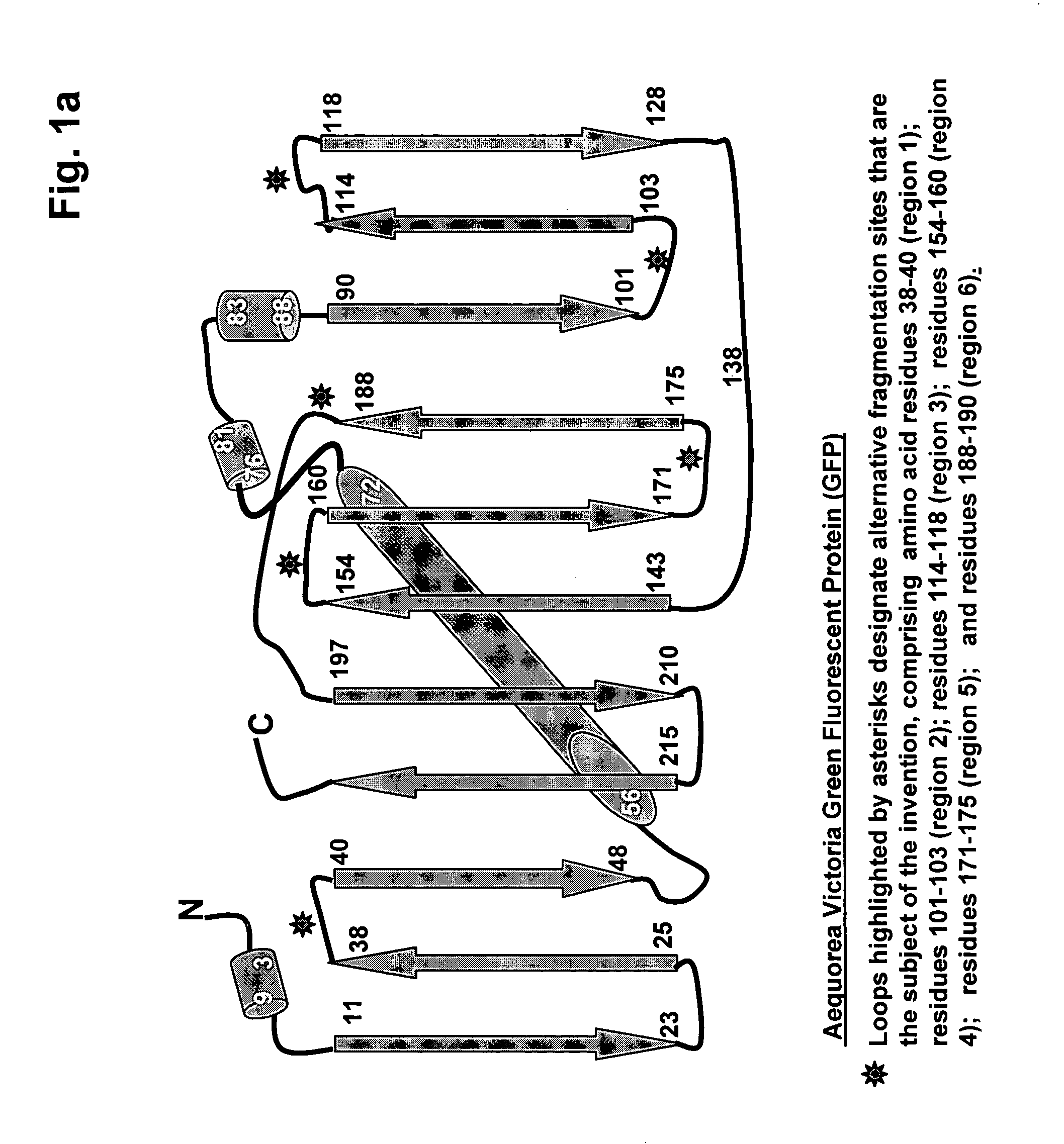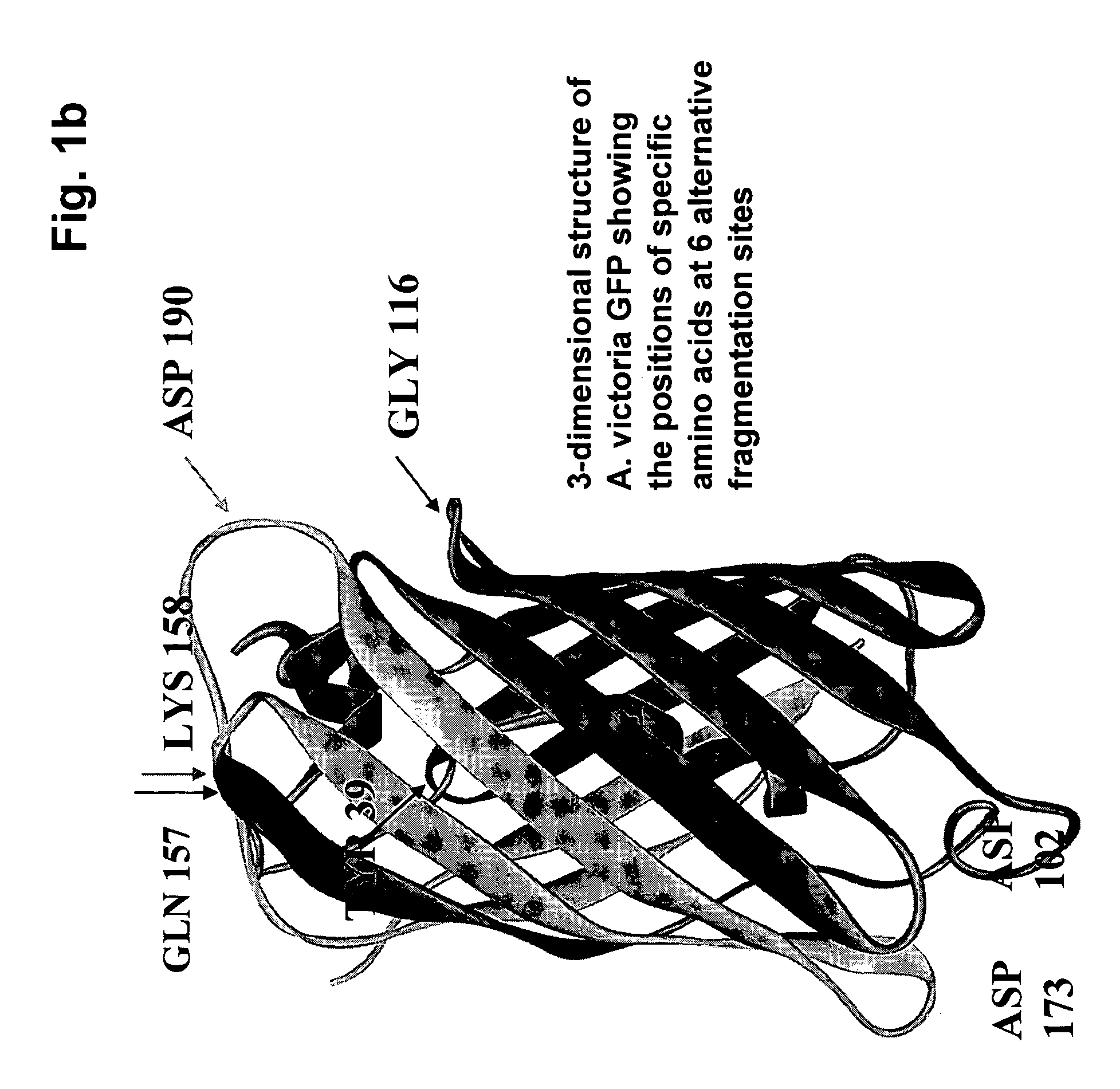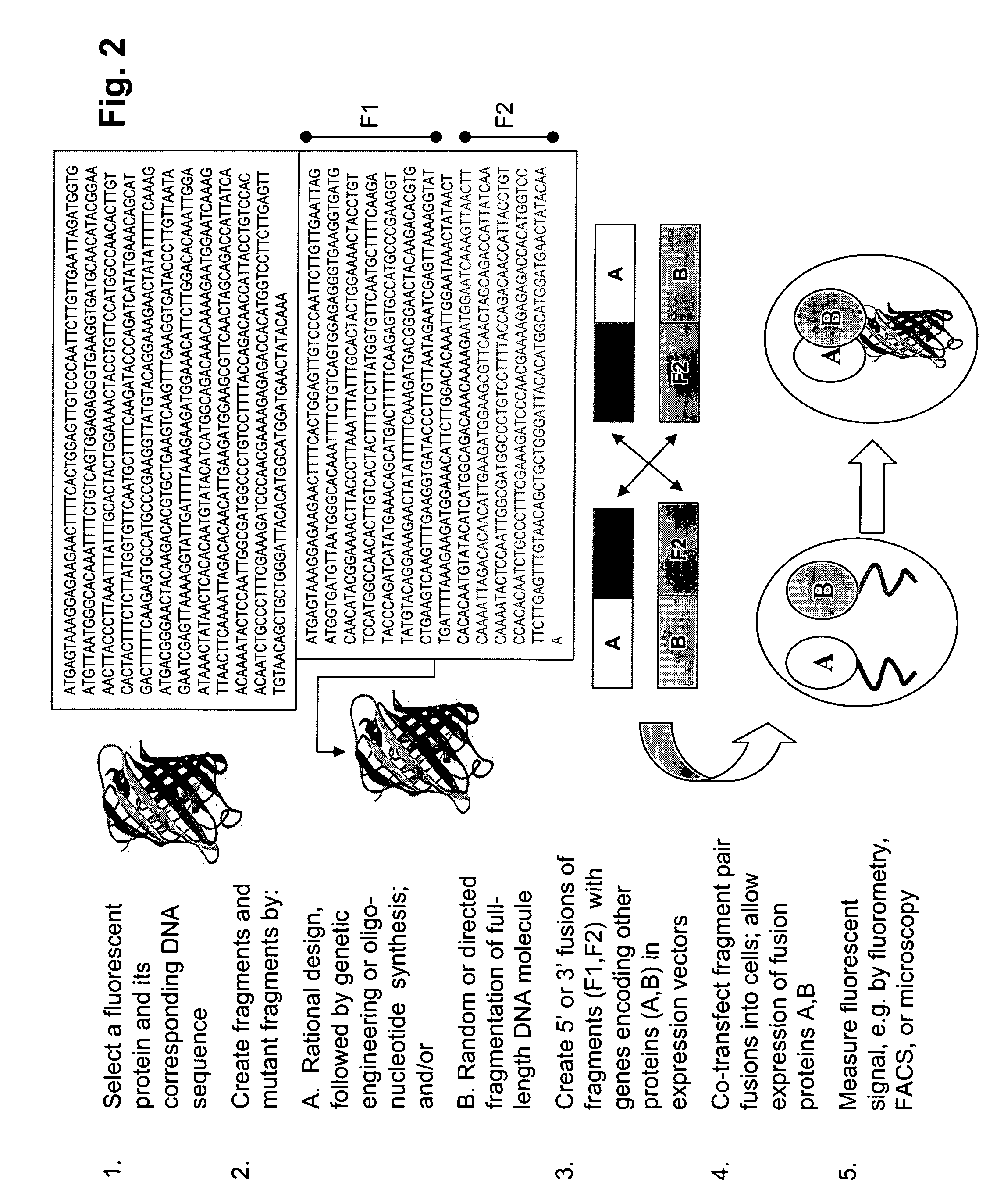Fragments of fluorescent proteins for protein fragment complementation assays
- Summary
- Abstract
- Description
- Claims
- Application Information
AI Technical Summary
Benefits of technology
Problems solved by technology
Method used
Image
Examples
example 1
Creation of Fluorescent Protein-fragment Complementation Assays and the Generation of Mutant Fragments for PCA
[0080]We sought to create two PCAs with different spectral properties starting with A. victoria GFP. First, GFP fragments were generated by PCR from a mammalian codon-optimized version of GFP (pCMS-EGFP; Clontech). GFP[1] corresponded to amino acids 1 to 158 and GFP[2] to amino acids 159 to 239 of GFP. Second, fragments encoding a yellow variant of GFP (YFP PCA) were created by introducing the EYFP-specific mutations S65G, S72A into fragment 1 of GFP and the mutation T203Y into fragment 2 of GFP by PCR, resulting in fragments YFP[1] and YFP[2], respectively.
[0081]The fragments GFP[1], GFP[2], YFP[1], and YFP[2] were subcloned into a mammalian expression vector (pcDNA3.1Z, Invitrogen), which had previously been modified to incorporate the replication origin (oriP) of the Epstein Barr virus (EBV). The oriP allows episomal replication of these modified vectors in cell lines exp...
example 2
Alternative Fragmentation Sites in Fluorescent Proteins
[0084]In order to demonstrate that fluorescent protein fragments generated from alternative fragmentation sites—that are the subject of the invention—could be used in PCA, fluorescent protein PCAs based were created for a yellow (YFP) fluorescent protein (see FIG. 4). cDNAs encoding full-length proteins (Pdk2, 14-3-3σ, and the components of the NFκB heterodimer p50 and p65) were fused to either the N- or C-terminus of complementary YFP fragments YFP[1] and YFP[2], corresponding to fragmentation of the full length protein at positions shown in FIG. 1a and FIG. 1b as Gln 157, Lys 158 or Asp 173, where the indicated amino acid residue represents the C-terminus of the N-terminal reporter fragment designated as YFP[1]. Formation of 14-3-3 / 14-3-3 dimers was used to assess the ability of each PCA fragment pair to allow for the detection of protein-protein complexes. Pdk2-YFP[1] / Pdk2-YFP[2] was used as a negative PCA control. HEK293E ce...
example 3
Mutant Fragments Generating a Super-enhanced YFP PCA (SEYFP-PCA) and an Intense Fluorescent PCA (IFP PCA) with Brighter Signals than YFP PCA for Biological Applications
[0085]To further demonstrate that the spectral properties of a PCA can be influenced by engineering mutant fragments, we first engineered the F64L and M153T mutations of SEYFP into YFP[1] by PCR, creating novel fragment SEYFP[1]. Subcloning was performed as described for Example 1. Fusion constructs were prepared as described above, for the interacting protein kinases MEK and ERK. Specific mutations in each reporter fragment confirmed by sequencing are noted, and are designated relative to wtGFP as in Table 2 and 3.
[0086]For quantitative measurements of fluorescence intensity, each well of a 96-well poly-lysine coated plate was seeded with 15,000 HEK293E cells 24 hours prior to transfection. Cells were transfected with 100 ng of DNA in total per well with FuGene transfection reagent, using conditions recommended by th...
PUM
| Property | Measurement | Unit |
|---|---|---|
| Volume | aaaaa | aaaaa |
| Volume | aaaaa | aaaaa |
| Volume | aaaaa | aaaaa |
Abstract
Description
Claims
Application Information
 Login to View More
Login to View More - R&D
- Intellectual Property
- Life Sciences
- Materials
- Tech Scout
- Unparalleled Data Quality
- Higher Quality Content
- 60% Fewer Hallucinations
Browse by: Latest US Patents, China's latest patents, Technical Efficacy Thesaurus, Application Domain, Technology Topic, Popular Technical Reports.
© 2025 PatSnap. All rights reserved.Legal|Privacy policy|Modern Slavery Act Transparency Statement|Sitemap|About US| Contact US: help@patsnap.com



